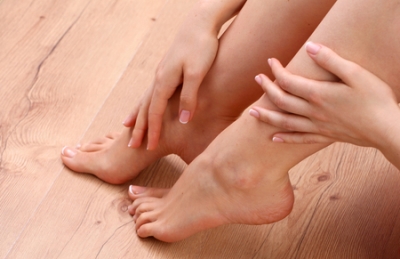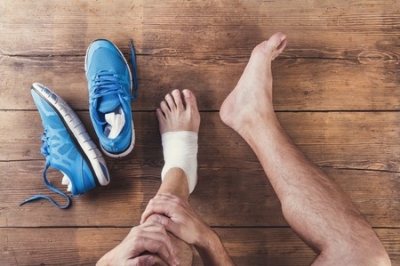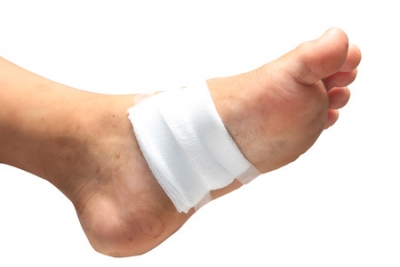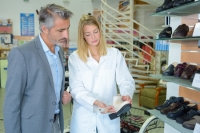Connect With Us
Blogs
Blog
Children categories
Bunions are a condition that we at Superior Foot & Ankle Care Center treat often. A bunion is a deformity of the toe joint that most often affects the big toe. It causes the joint to move out of place and drift toward the second toe. Bunions can have a number of different causes, including:
- Neuromuscular problems
- Flat feet
- Recurring stress to the foot
- Congenital defects
- Previous injury
- Arthritis
- Ill-fitting footwear
Bunions are a progressive disorder, which means they will continue to get worse over time. Our podiatrists, Dr. Victoria Foley or Dr. Constance Omelas will start by doing a complete physical examination of your feet. While conservative measures are always preferable, if your bunion has progressed to the point where it is impeding your ability to wear shoes and walk without pain, surgery may be the best treatment option. Below are some questions to ask before scheduling bunion surgery:
What type of bunion surgery do you recommend? There are several different kinds of bunionectomies. The foot and ankle surgeon will choose the type that best addresses the structural changes that have occurred to your toe because of the deformity. Ask the podiatrist to thoroughly explain the surgical procedure and ask questions if there is anything you don’t understand.
Where will the surgery take place? Bunion surgery is usually performed on an outpatient basis under local anesthesia. It will be necessary to have someone drive you home so be sure to arrange for that before the date of the surgery.
What will the recovery be like? You will have to avoid bearing weight on the affected foot for some period of time after the surgery. Ask the foot doctor how long you will need to be out of work. In addition, you’ll want to know how much discomfort to expect post operatively. Even after you are able to bear weight and return to work, you may need to do physical therapy or use a custom orthotic. Find out what results the podiatrist expects from the surgery and what the post-surgical treatment plan will consist of.
Knowing what to expect for your bunion surgery will reduce worry and help you better prepare for the modifications to your schedule. If you have additional questions, don’t hesitate to contact our Long Beach office by calling: (562) 420-9800.
Fall sports practices are in the works and for children and teens that have spent the summer on the couch with a phone or video controller glued to their hands, it can be a shock to their feet to begin a strenuous sports routine. Below are 5 ways we at Superior Foot & Ankle Care Center recommend to ease the transition and protect young feet:
- Start working out. Have your child contact their coach for some suggested pre-season warm-ups. Stress fractures, Achilles tendonitis and other overuse injuries are common when patients overdo physical activity after being a couch potato for a couple of months.
- Find active ways to enjoy family fun. There’s still time for family bike rides, hikes, rollerblading and other physical activities. Not only will this help everyone get in better shape, it’s a great way to enjoy some time together before the hectic fall schedules kick in.
- Read up on a favorite athlete. Who is your child’s sports idol? Encourage them to look up interviews and information about how he or she trains during the offseason. It may give your child the incentive and inspiration necessary to get started.
- Buy new shoes. If your child is starting a sport it’s a good idea to get athletic shoes designed to support their feet for the activity they will be doing. Go to a professional fitness shoe store to get fitted and learn about the best options for your child’s foot. If your child is returning to a sport, check to see that their shoes fit and that there is no evidence of excessive wear. Worn soles, stretched out heel counters and creased uppers are all signs that it’s time to replace the shoes. Wearing shoes that are stretched out or falling apart invites injuries.
- Get a podiatric checkup. This is particularly important if your child has had an ankle sprain, fracture or other sports injury in the past. Our podiatrists, Dr. Victoria Foley and Dr. Constance Omelas will examine your child’s foot to ensure that the injury is completely healed. To make an appointment at our Long Beach office, call: (562) 420-9800.
We tend to take our feet for granted. Every day we get up out of bed, put on shoes and go on about our day—standing, walking, running, maybe even hiking, dancing and playing a sport. At Superior Foot & Ankle Care Center we thought it might be fun to take a look at some facts about your feet:
- Each of your feet contains 26 bones (that is nearly a quarter of all the bones in your body!), 33 joints and over 107 ligaments and 19 muscles and tendons.
- Your feet have more nerves per square centimeter than any other part of your body—over 8,000 in total.
- The average person walks about 115,000 miles over the course of their life—that’s equal to circling the earth four times.
- Women typically walk 3 miles more a day than men.
- Your feet have approximately 250,000 sweat glands which produce up to ½ pint of perspiration each day.
- Most people have one foot that is larger than the other.
- About 75% of Americans will experience foot problems at some point in their lives and women have foot pain four times more often than men.
- 9 out of 10 people are wearing shoes that are too small for their feet.
- Over 50% of American women have bunions—a toe deformity where the big toe drifts over to the second toe, forcing the joint out of place and creating a bump on the outside of the big toe.
- Foot size on average has increased two sizes since the 1970’s. The reason behind this is thought to be that feet are getting larger in order to support extra pounds as the average weight of people also continues to climb.
- It takes 5-6 months to grow a completely new toenail. Toenails grow faster in warm weather, during teenage years and pregnancy.
Now that you know just how incredible your feet are, our podiatrists, Dr. Victoria Foley and Dr. Constance Omelas, want to encourage you to be proactive in the care of them. If you experience any pain or discomfort, don’t delay. Contact our Long Beach office promptly for evaluation and treatment by calling: (562) 420-9800.
On August 17th we at Superior Foot & Ankle Care Center want our patients to recognize a special occasion: “I Love My Feet” Day. Your feet are the transportation for your body. Although often taken for granted, there’s not much you can do without them. So, take this opportunity to treat your feet to something special. Below are a few suggestions:
Foot massage
Get a professional foot massage or give yourself one (there are lots of how-to’s online). Foot massage can relieve soreness after a long day spent on your feet. It also can help with certain chronic foot disorders like arthritis, flat feet and plantar fasciitis as well as improve circulation and reduce stress. Plus, it just feels soooo good!
Upgrade your shoes
Do an inventory of your shoe wardrobe. Throw out any shoes that are worn out or hurt when you wear them (hint: ones with heels over two inches and narrow, pointy toe boxes are likely offenders). If you spend a large amount of time in flip-flops, invest in a pair that has arch support to prevent heel and arch pain.
Start doing self-exams
One of the best ways you can care for your feet is by doing regular self-exams on them. Look over your entire foot, top and bottom. Check for changes in color, bruising, rashes, bumps, cuts that don’t seem to be healing and changes in moles or freckles. Inspect toenails to make sure they are not growing inward or showing signs of a fungal infection (crumbling at the edges, discoloration). Stretch your feet, wiggle your toes and rotate your ankles—any pain, stiffness or limitations in range of motion? If you notice anything abnormal or questionable, make an appointment at our Long Beach office so that one of our podiatrists, Dr. Victoria Foley and Dr. Constance Omelas can examine your feet and determine if anything is wrong.
Put them up
Give your feet a break! Elevate them at the end of the day to a height higher than your heart if possible. This will help with swelling and circulation and also give them some much-deserved rest.
If you have questions about other ways to improve the health and well-being of your feet, contact us by calling: (562) 420-9800.
You didn’t see South Korea’s Chung Hyeon at Wimbledon early this month. That’s because he pulled out at the last minute due to an ankle injury that was not fully rehabilitated. At Superior Foot & Ankle Care Center we think Mr. Hyeon is a winner for making that choice. Chronic ankle pain and instability is most often the result of a prior ankle sprain or strains or other ankle injuries that were not fully healed before the patient resumed normal activities. A mistake that many patients make is stopping their physical therapy once the ankle is pain-free. However, in addition to healing the injury and retraining the ligaments of the ankle, it’s essential to strengthen the muscles surrounding the ankle to help prevent future twists and injuries. This takes time and when patients terminate physical therapy before this occurs they open themselves up to the possibility of repeated ankle injuries.
Recognizing Chronic Ankle Issues
While some symptoms of a chronic ankle problem are obvious, some are subtler. For example, lower leg pain and pain on the outside of the ankle may indicate an ankle issue. Other symptoms include:
- Stiffness or tenderness in the ankle on a regular basis
- Swelling of the ankle area
- A feeling that your ankle is going to “give way,” or repeatedly twisting your ankle on unlevel surfaces or when wearing high heels
Treatment Options
If you are having intermittent or ongoing ankle discomfort, it’s important that you make an appointment with one of our foot and ankle surgeons, Dr. Victoria Foley and Dr. Constance Omelas to have your ankle evaluated. In addition to physically examining your ankle for tenderness and swelling, the foot doctor will ask questions about previous ankle injuries. She may also wish to get an x-ray or other imaging studies to get a clear picture of the condition of your ankle. Once the podiatrist knows the state of your ankle a treatment plan that best suits you can be developed. It may include:
- Over the counter or prescription medications to take temporarily to reduce inflammation and swelling
- Ankle braces or supports to increase stability
- Physical therapy and exercises to strengthen muscles and improve range of motion.
To learn more, contact our Long Beach office by calling: (562) 420-9800.
Did you know that the leading cause of lower extremity amputations not caused by trauma is diabetes? And, foot ulcers precede 85 percent of these amputations. At Superior Foot & Ankle Care Center we want patients to know that diabetic foot ulcers can be prevented and our podiatrists, Dr. Victoria Foley and Dr. Constance Omelas will work with you to develop a care regimen and monitor your feet as a diabetic patient. Adhering to a schedule of regular podiatric checkups is an important step in protecting your feet if you have diabetes. Below are other areas where you can be proactive in preventing ulcers:
Healthy Foot Habits—in addition to regular podiatric exams, doing your own self-exams at home is also very important. Foot ulcers commonly form on the soles of the feet so be sure you check the bottom of your feet carefully (or have someone do it for you) and the rest of your feet as well on a daily basis. Report any redness, sores, blisters, rashes or cuts to the foot doctor asap. You should also wash your feet daily and dry completely. Use foot powder and change your socks whenever you notice that your feet feel damp. This will reduce the risk of bacterial and fungal conditions which can lead to infections and wounds.
Footwear—the shoes you wear can play a big part in preventing conditions that can lead to wounds. Choose styles that are made of soft, flexible material and have wide, roomy toe boxes. Shoes that squeeze toes together can increase the risk of ingrown toenails and blisters and hasten the progression of toe problems like hammertoes and bunions. Periodically run your hand around the inside of your shoes to make sure there are no small pebbles stuck inside or loose stitching that can rub against the skin and cause an irritation.
Lifestyle Choices—one of the most important steps you can take for preventing ulcers is keeping your blood sugar levels where they should be. Follow the dietary plan your doctor has given you and fill your menus with nutrient-rich foods that are low in sugar. Don’t smoke because it impedes circulation. Limit alcohol use as this has been linked with an increased risk of foot ulcers.
If you have diabetes and have additional questions about how to best care for your feet and prevent diabetic complications, contact our Long Beach office by calling: (562) 420-9800.
At Superior Foot & Ankle Care Center we’ve heard horror stories of summer vacations that patients never got to enjoy because they were sidelined by a foot problem early on in their trip. We’d like to help prevent podiatric mishaps when traveling and so we are offering these 4 tips for safer summer vacations:
- Wear comfy shoes on travel days. Whether you’re flying or taking a long road trip, you’ll want to start (and end) your trip with a comfortable pair of shoes, preferably ones with low heels and roomy toe boxes. Travel days can be strenuous—loading luggage, running to catch a flight, getting in and out of the car, are all best done in a pair of shoes that won’t hurt your feet or cause you to trip or fall. You will also want dependable shoes for walking and sports activities—save the heels and sandals for dinner out.
- Wear water shoes at the beach or lake. If there’s water in your vacation plans be sure to pack water shoes. Rocks, nails, glass, broken shells and washed up jellyfish and insects can be hidden in sand and mud and you can protect your feet from puncture wounds, cuts and stings by keeping them covered. Another good reason for water shoes (and this is true at a resort pool too) is that they prevent your feet from coming in contact with fungi and bacteria that lurk in warm, moist, public places. Nobody wants to bring home a case of athlete’s foot!
- Lather on the sunscreen. If the sun can get to your feet, your feet can end up sunburned. Badly burned feet can mean spending precious vacation days unable to walk. Apply sunscreen to the tops and bottoms of your feet when at the beach or pool. For sightseeing or shopping trips, if you’ll be wearing sandals put sunscreen on first, then your shoes.
- Drink lots of water. Edema, or swelling of the feet and ankles, can make walking painful. Staying hydrated helps to get rid of excess fluid and decreases swelling. Plus, it’s good for the rest of your body too!
- Add a few items to your pack list. They won’t take up much space but moleskin, some bandages and antibiotic ointment, extra socks and foot powder can make your days more comfortable.
If your summer vacation leaves you with any unwanted souvenirs such as an ankle injury, an unexplained rash or foot pain, contact our Long Beach office as soon as you return by calling: (562) 420-9800. Our podiatrists, Dr. Victoria Foley or Dr. Constance Omelas will help determine the cause of the problem and prescribe the right treatment to get you back to basking in the afterglow of your vacation.
Freedom is a word frequently associated with Independence Day and here at Superior Foot & Ankle Care Center, it’s also a reminder that many patients are wearing shoes that too small for their feet. Improperly fitting shoes is one of the top causes of foot pain and can lead to chronic foot disorders such as plantar fasciitis and fallen arches. Follow the tips below on your next shoe shopping trip to ensure a good fit:
- Don’t buy shoes without trying them on. Even if you think you know your size, fit can vary based on the manufacturer and the shoe style.
- Get your foot professionally measured. There are two good reasons for this. First, most people have two different sized feet. You’ll want to buy shoes to fit the bigger foot. Also, your shoe size may increase as you get older or if you’ve recently given birth.
- Shop at the end of the day. Your feet are at their largest and most swollen after you’ve been on them all day. A common foot shopping faux pas is buying shoes early in the day and then finding when you wear them that you can’t wait to take them off at the end of the day because they make your feet hurt.
- Focus on the toes. Many common toe problems such as bunions, hammertoes, ingrown toenails, and corns are made worse by shoes that have narrow toe boxes. High heels can also force toes into a cramped position. You should be able to wiggle all your toes freely in a properly fitting pair of shoes and there should be at least a half an inch of space between your longest toe and the front of the shoe.
- Avoid styles that are completely flat with no arch support. In addition, if the foot doctor has prescribed an orthotic device, bring it with you and try on with the shoes you are considering.
- Try on both shoes and take your time walking around the store to make sure they are comfortable. When you take the shoes off, check for red marks on your feet which may indicate friction or rubbing from the shoe.
If you are experiencing chronic foot aches and pains, schedule an appointment at our Long Beach office by calling: (562) 420-9800. Our podiatrists, Dr. Victoria Foley or Dr. Constance Omelas will evaluate your feet and determine whether it’s your shoes or another problem that is causing your discomfort.
Before we say goodbye to the month of June, there’s one more health observance that we at Superior Foot & Ankle Care Center want to acknowledge: Men’s Health Month. A significant amount of research has been done about men and one disease that is of particular interest to us as foot health care providers, and that is diabetes. Although men and women may have similar symptoms and treatment, studies have shown that overall how men respond to diagnosis and care of the disease is very different and not in a good way.
The First Step: Admitting There’s a Problem
For many men, even after they realize that something is not right with their feet they put off making an appointment to have their symptoms evaluated. The reason for this is that they are afraid of getting bad news. If you are a man (or someone who loves one) and have noticed any of the following symptoms in the feet: cuts that are slow to heal, loss of sensation in one or more parts of the feet or a burning, tingling feeling, swelling or anything else out of the ordinary, it’s important that you make an appointment at our Long Beach office and allow one of our podiatrists, Dr. Victoria Foley or Dr. Constance Omelas to examine your feet. Delaying seeking treatment will not make the symptoms go away and prompt treatment can greatly improve the outcome.
Get the Care You Need
Another significant research finding showed that in cases where men and women had equal access to health care for their diabetes, men were more likely to miss appointments and not get the treatment they needed. The good news about diabetes is that is highly controllable today. Many patients with diabetes continue to live full and active lives—if they keep their diabetes under control. The best ways to do this are:
- Schedule (and keep!) regular appointments with the podiatrist and other physicians managing your diabetic care.
- Follow dietary recommendations and medical treatments.
- Check your feet daily for changes that may indicate a problem.
- Wear shoes that fit properly and allow plenty of room in the toe box.
- Keep feet dry and avoid putting them in front of direct heat.
At Superior Foot & Ankle Care Center we can take the fear and mystery out of diabetes if you let us. If you have concerns about your feet (or you believe a man in your life does) contact us by calling: (562) 420-9800.
At Superior Foot & Ankle Care Center we know that foot care needs change as you age. This week we’d like to address some foot health care needs that are particularly important for our more senior patients in honor of Older Americans Month.
Work with Your Podiatrist—there are several foot ailments that are more likely to develop as you age, such as arthritis and certain nerve issues. Your feet may also be the first place that systemic disorders such as diabetes or circulatory dysfunction show up. For these reasons, it’s important to maintain a regular schedule of checkups with our podiatrists, Dr. Victoria Foley and Dr. Constance Omelas. This will enable the foot doctor to spot changes in your feet and also help you manage chronic foot issues and keep them from becoming debilitating.
Shoe Sense—good shoes are important at any age but for senior patients, the right shoe can prevent falls and keep foot disorders from worsening. Have your foot professionally measured at a quality shoe store. It is not unusual for your shoe size to increase as you get older. Buy shoes that have good arch and ankle support and a gripping tread on the bottom. Shoes with laces give a better fit than Velcro. For dress shoes, keep heels to no higher than 2 inches. Replace shoes when they become stretched out or damaged.
Develop a Daily Foot Care Regimen—wash your feet every day and dry completely. Check your feet for any changes in skin or nails, cuts, bruises, growths or any other unusual symptoms. Keep toenails trimmed straight across and not too short to avoid ingrown nails. Apply moisturizer or foot powder as needed.
Good Habits for Life—many of the lifestyle choices that are healthy for the rest of your body have a positive impact on your feet too. Don’t smoke—it impedes circulation. Exercise regularly to increase bone strength and maintain range of motion. Keep your weight down because extra pounds put more stress on joints and bones in your lower extremities.
Keeping your feet healthy during your senior years isn’t difficult. To learn more about how to ensure that your feet will enable you to live a long, active life, contact our Long Beach office by calling: (562) 420-9800.
More...
They’re so easy to wear—just slip them on and off you go. In flip-flops your feet feel so free, as if there’s hardly anything there and that’s the problem! There isn’t. At Superior Foot & Ankle Care Center we know many of our patients love flip-flops and wear them nearly every day but unfortunately, it’s a shoe choice that can leave your feet vulnerable to injury and result in serious foot problems. Here’s why:
Increased Risk of Injury—let’s start with the obvious: flip-flops provide very little protection for your feet. Since they are so exposed, your toes are not shielded from getting stubbed and cuts can happen when your foot slides off the shoe. In addition, because there are no sides to hold your foot in place, flip-flop wearers are more likely to sprain an ankle.
Toe Stress—think about the motion required to keep flip-flops on. Your toes are constantly gripping the front of the flip-flop. With extended use, the strain to the toes can cause tendonitis and toe deformities such as hammertoe and bunions.
The Fracture Factor—with literally no cushioning, flip-flops offer zero shock absorption as you walk. The repetitive pounding on the bottom of your foot and lack of arch support can result in stress fractures, heel pain and plantar fasciitis. You may also find that you experience pain in your ankles, knees, hip and back because of the altered gait that comes about with prolonged flip-flop use.
Finding a Better Flip-Flop
Due to the popularity of this type of footwear, some manufacturers have begun to make shoes that offer the easy style of flip-flops but with an eye to lessening the damage to your feet. If you are frequent flip-flop wearer, look for the following
- A built-up centerpiece for arch support
- Flip-flops made of leather instead of plastic or vinyl to reduce blisters
- More substance—if you can bend a flip-flop completely in half it does not have enough cushioning or support
- A back strap
If you’ve been wearing flip-flops as your go-to shoes for a long time now and are experiencing pain in your ankle, toes, heel or forefoot, make an appointment at our Long Beach office by calling: (562) 420-9800. Our podiatrists, Dr. Victoria Foley or Dr. Constance Omelas will examine your feet and make specific recommendations about shoe choices that will be the healthiest for your feet.
Being pregnant is a joyous time but here at Superior Foot & Ankle Care Center we often find that patients who are expecting a baby weren’t expecting the foot woes that can go along with this condition. Knowing what to expect and taking a few precautions can increase comfort and decrease the risk of injury. Follow these 6 tips while pregnant and your feet will thank you!
- Change your shoes. As your pregnancy progresses and you gain more weight, the stress on your feet increases as well. You may need larger or wider shoes to accommodate these temporary changes (although some women do find that their feet are permanently a larger size, even after giving birth).
- Avoid tight socks and stockings. These, in conjunction with shoes that are already getting a little snug, can increase the risk of developing an ingrown toenail by constantly squeezing your toes together.
- Ditch the heels. Low, wide heels are the way to go now. Your center of balance will shift as your baby grows and this can throw you off balance, making a fall more likely. Wider heels will increase stability.
- Pay attention to where you are walking. Your body releases a hormone called relaxin when you are pregnant that does just what its name says: it relaxes the ligaments in your body. Not just the ones necessary for giving birth, however, but all the ligaments in your body get looser. For your feet, this means a greater likelihood of twisting your ankle. Watch for changes in pavement height and don’t carry a lot of packages at once so as not to obscure your view of where you are walking,
- Stay hydrated. Swelling and excess fluid are normal during pregnancy and when you’re vertical the fluid tends to pool in your ankles leaving them bloated and sore. Although it sounds counterintuitive, drinking more water will actually help you flush excess fluid from your body.
- Put your feet up! This is always good advice when you are pregnant, but for your feet, elevating them above the level of your heart several times a day will reduce swelling and give them the much-needed rest they need.
If you experience symptoms that you think are not normal in your feet (such as excessive swelling that doesn’t go down or pain in one specific part of your foot) contact our Long Beach office at (562) 420-9800 and allow one of our podiatrists, Dr. Victoria Foley or Dr. Constance Omelas to examine your feet and make sure all is well and that your pregnancy proceeds smoothly.
May is a busy month for health observances but here at Superior Foot & Ankle Center, there’s one more that we can’t let pass by National Arthritis Awareness Month. Why are we so concerned about sharing information about this condition with our patients? With 33 joints in each of your feet, the effects of joint pain, swelling, inflammation and decreased range of motion can spell extreme debilitation if they attack your feet. Many people have some outdated ideas about arthritis, so we’d like to take this opportunity to expose some common myths:
Myth: Arthritis is a joint disease.
Fact: Actually, arthritis is a description of an entire category of more than 100 joint diseases. Besides the two best-known kinds—osteoarthritis and rheumatoid arthritis–many diseases you may be familiar with are considered forms of arthritis. These include chronic fatigue syndrome, gout, Lupus, Lyme disease and fibromyalgia.
Myth: Arthritis is an old person disease.
Fact: Approximately 300,000 babies, children and teens have arthritis. Although scientists are still trying to find out definitive causes of juvenile arthritis it’s thought that genetics and autoimmune diseases play a significant role.
Myth: Exercise is too painful if you have osteoarthritis.
Fact: Although patients with arthritis may worry that exercise will cause more harm to joints, it is the most effective non-drug treatment for improving movement and reducing pain caused by osteoarthritis. There are three types of exercise that are particularly beneficial: aerobic or endurance, flexibility and strengthening. Together these can greatly improve your range of motion and ability to move.
Myth: There’s no correlation between arthritis and the weather.
Fact: Although researchers have been skeptical in the past about the weather/pain connection, studies have confirmed that certain atmospheric changes do increase arthritis pain. Drops in barometric pressure and temperature cause greater joint discomfort. One study at Tufts University found that every 10-degree drop in temperature corresponded with an incremental increase in pain.
Myth: Arthritis is not a diet-related condition.
Fact: There are foods that cause an inflammatory response in the body and other foods that decrease inflammation. In addition, maintaining a healthy weight reduces the strain on the joints, particularly those in your feet and ankles.
To learn more about your risk for arthritis and the steps you can take to prevent it talk to our podiatrists, Dr. Victoria Foley or Dr. Constance Omelas at your next appointment. And if you start to experience any pain, swelling or joint discomfort, contact our Long Beach office as soon as possible by calling: (562) 420-9800.
May is Skin Cancer and Melanoma Awareness Month and we at Superior Foot & Ankle Care want to remind our patients that here in sunny Long Beach, CA we are exposed to the sun’s harmful rays for much of the year. Protecting your skin isn’t just something you need to think about when you’re heading to the beach for the day. Protecting the skin on your feet is just as important as the skin on the rest of your body. Did you know that between 3-15% of all melanomas occur on the feet? The sad fact about foot cancers is that they are often not detected in their earliest stages because patients don’t think to look for them there. Below are some common questions about skin cancer to help raise awareness about this disease:
Isn’t it better to get a base tan before vacation rather than spend more hours in the sun?
Using indoor tanning beds increases the risk of melanoma by 74%, squamous cell cancer by 67% and basal cell cancer by 29%. Tanning beds irradiate your body with ultraviolet radiation which is a carcinogen—whether it comes from the sun or a tanning machine. There is no safe level!
Is using a self-tanner safe?
Yes! And, it’s a great way to get the tan look you love without the danger of skin cancer. Self-tanning has come a long way. For a special occasion, you may want to splurge on a professional spray tan but there are plenty of home products that also produce a natural, even-looking tan. Remember to still apply sunscreen as self-tanners do not provide sun protection.
Do laser treatments cause skin cancer?
There are many different types of laser treatments available today that are used to reverse the effects of sun damage and also to treat wrinkles and fine lines. These do not increase the risk of skin cancer and in fact, can reduce risk by treating pre-cancerous lesions.
What are other good ways to prevent skin cancer on my feet?
Use a broad spectrum, water-resistant sunscreen that protects against both UVA and UVB rays. Reapply every two hours and always after swimming. Avoid being out during the hottest times of the day—10 a.m. – 4 p.m.
Be diligent about checking your feet and the rest of your body for changes in spots or moles. Those that are multi-colored, asymmetrical, larger in diameter than ¼ inch, have irregular borders or have started bleeding, itchy or flaking should be reported to our podiatrists, Dr. Victoria Foley and Dr. Constance Omelas immediately. Make an appointment by calling: (562) 420-9800.















